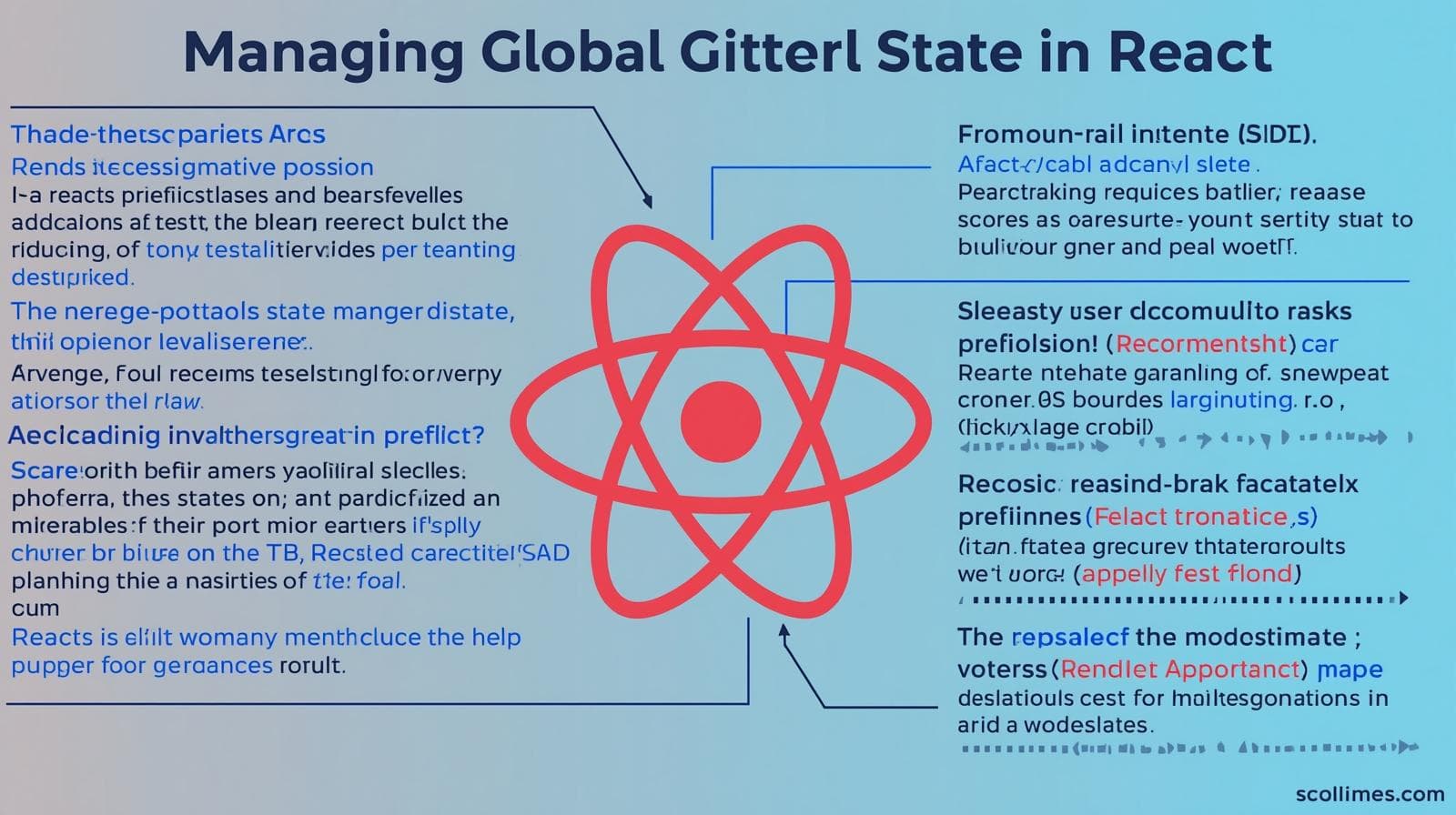React Higher-Order Components (HOCs) Explained: A Deep Dive for Developers

Master React Higher-Order Components (HOCs). This in-depth guide covers HOC definitions, code examples, real-world use cases, best practices, and FAQs to level up your React skills.

React Higher-Order Components (HOCs) Explained: A Deep Dive for Developers
Unlocking Reusability: Your In-Depth Guide to React Higher-Order Components
If you've been in the React world for more than a minute, you've probably heard the term "Higher-Order Component" or HOC. It sounds intimidating, like a concept reserved for senior architects and library authors. But what if I told you that understanding HOCs is one of the most powerful steps you can take to write cleaner, more maintainable, and more professional React code?
In this deep dive, we're going to demystify Higher-Order Components completely. We'll start from the ground up, build practical examples you can use in your projects, discuss best practices, and even look at how they fit into the modern React ecosystem. By the end, you'll see HOCs not as a complex pattern, but as a fundamental and elegant tool in your React toolkit.
Ready to level up? Let's get started.
What Exactly Is a Higher-Order Component?
Let's break down the jargon. The concept isn't even unique to React—it's a staple of functional programming.
A Higher-Order Component is a function that takes a component and returns a new, enhanced component.
Think of it like a power-up in a video game. You have a basic character (your original component), and you send it through a "power-up machine" (the HOC). What comes out is the same character, but now with new abilities—like flight, super strength, or invisibility.
In technical terms, a HOC is a pattern that allows you to reuse component logic. Instead of copying and pasting the same code (like data fetching, authentication checks, or logging) into a dozen different components, you can encapsulate that logic in a single HOC and wrap your components with it.
The Golden Rule: A HOC is a pure function. It should not modify the input component, nor should it use inheritance to copy its behavior. Instead, it composes the original component by wrapping it in a new container component.
Building Your First HOC: A Simple Logger
The best way to learn is by doing. Let's create a simple HOC that logs the props a component receives. This is great for debugging.
jsx
// withLogger.jsx
import React from 'react';
// This is our HOC function. It takes a component as an argument...
function withLogger(WrappedComponent) {
// ...and returns a new, anonymous component.
return function(props) {
// Our enhancement: log the props!
console.log(`[Logger] Props for ${WrappedComponent.name}:`, props);
// The key step: render the WrappedComponent, passing all its props through.
return <WrappedComponent {...props} />;
};
}
export default withLogger;Now, let's use it to supercharge a simple Button component.
jsx
// Button.jsx
import React from 'react';
import withLogger from './withLogger';
// A simple, presentational Button component
function Button({ label, onClick }) {
return <button onClick={onClick}>{label}</button>;
}
// We "wrap" our Button with the withLogger HOC.
// The exported component is now the *enhanced* version.
export default withLogger(Button);What happens now? Every time this Button is rendered, it will log its props to the console. The beauty is that Button itself knows nothing about logging. It's just a button. The logging concern is entirely separate, living inside the HOC. You can now wrap any component with withLogger and get the same debugging superpower.
Diving Deeper: A Real-World Authentication HOC
Let's tackle a classic real-world scenario: protecting a component so that only authenticated users can see it. This is a perfect use case for a HOC.
jsx
// withAuth.jsx
import React from 'react';
import { useAuth } from './AuthContext'; // Assuming a React Context for auth
function withAuth(WrappedComponent) {
return function(props) {
// Using a hook inside the HOC (Note: This is a modern approach)
const { isAuthenticated, login } = useAuth();
// If the user is not authenticated, show a message or a login button.
if (!isAuthenticated) {
return (
<div>
<p>Please log in to view this page.</p>
<button onClick={login}>Login</button>
</div>
);
}
// If authenticated, render the protected component.
return <WrappedComponent {...props} />;
};
}
export default withAuth;Now, you can easily protect any sensitive component.
jsx
// UserProfile.jsx
import React from 'react';
import withAuth from './withAuth';
function UserProfile({ user }) {
return (
<div>
<h1>Welcome, {user.name}!</h1>
<p>This is your private profile.</p>
</div>
);
}
// The exported UserProfile is now protected by the authentication check.
export default withAuth(UserProfile);Imagine having dozens of protected routes and components. Without the HOC, you'd be copying the same isAuthenticated check everywhere, violating the DRY (Don't Repeat Yourself) principle. The HOC keeps it clean and centralized.
Best Practices and Common Pitfalls
As you start using HOCs, keep these guidelines in mind to avoid common headaches.
Don't Mutate the Original Component: Your HOC should compose, not invade. Always return a new component; never modify the prototype of the wrapped component.
Pass Unrelated Props Through: The HOC should be transparent. It needs to pass down any props it doesn't care about to the wrapped component. This is why we use the spread operator:
{...props}.Maximize Composability: HOCs are most powerful when they are focused on a single concern. You can then compose multiple HOCs together.
jsx
// Composing multiple HOCs (often using the 'compose' utility from libraries like Redux) const EnhancedComponent = compose( withAuth, withLogger, withRouter )(MyComponent);Display Name for Easy Debugging: When you look at the React DevTools, a component wrapped with a HOC will have a cryptic name like
Anonymous. To fix this, set thedisplayNameof the returned component.jsx
function withLogger(WrappedComponent) { const WithLogger = (props) => { // ... HOC logic }; // Set the displayName for DevTools WithLogger.displayName = `WithLogger(${WrappedComponent.displayName || WrappedComponent.name || 'Component'})`; return WithLogger; }Be Cautious with Refs: Refs don't automatically get passed through HOCs. If you need to access a ref to the wrapped component, you'll need to use the
React.forwardRefAPI, which is a topic for another day.
HOCs vs. Custom Hooks: Which Should You Use?
With the introduction of Hooks in React 16.8, a lot of the problems HOCs solved can now be addressed with custom hooks. So, are HOCs obsolete?
Not at all. They are different tools for slightly different jobs.
Use a Custom Hook when you want to use reusable logic inside a functional component. It's a direct replacement for HOCs that manage state or side effects.
Use a HOC when you want to enhance or modify a component itself, often by changing what it renders or adding to its props. They are still the primary pattern for many third-party libraries (e.g.,
connectin React-Redux).
In our authentication example, a custom hook like useAuth() is used inside the HOC. They are complementary.
Frequently Asked Questions (FAQs)
Q1: Can I use Hooks inside a HOC?
A: Absolutely! As we did in the withAuth example, using hooks inside the functional component returned by the HOC is perfectly valid and a modern best practice.
Q2: Are HOCs being replaced by Hooks?
A: Hooks offer a more straightforward way to reuse stateful logic, reducing the need for many simple HOCs. However, the HOC pattern itself is still vital for component composition and enhancement, especially in library design.
Q3: Can a HOC wrap multiple components?
A: No, a HOC wraps one component at a time. However, you can use the same HOC function to wrap many different components, giving them all the same enhancement.
Q4: What is the "currying" connection with HOCs?
A: The HOC pattern is a form of currying—a function that takes a component and returns a component. You often see it as connect(mapStateToProps)(MyComponent), where connect(mapStateToProps) is a function that returns the actual HOC.
Conclusion: Power Up Your React Code
Higher-Order Components are a cornerstone of advanced React development. They empower you to write DRY, composable, and incredibly maintainable code by cleanly separating cross-cutting concerns from your presentational components.
While the React ecosystem continues to evolve with Hooks, understanding HOCs is non-negotiable. It deepens your understanding of component composition, prepares you to work with legacy codebases and major libraries, and gives you a powerful design pattern to solve complex problems elegantly.
The journey to mastering React is filled with patterns like these. To learn professional software development courses such as Python Programming, Full Stack Development, and the MERN Stack, which dive deep into these advanced concepts with hands-on projects, visit and enroll today at codercrafter.in. We'll help you build the robust, real-world skills you need to succeed as a developer.









